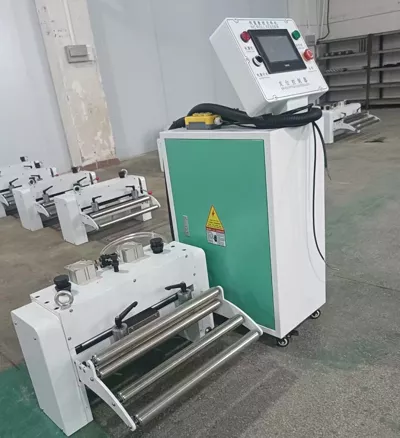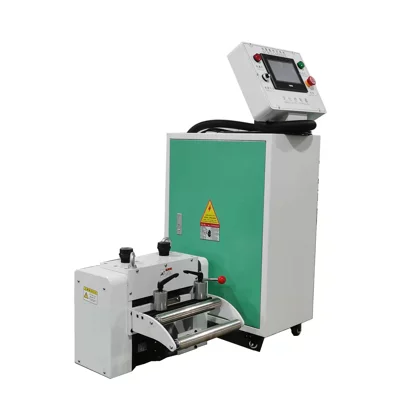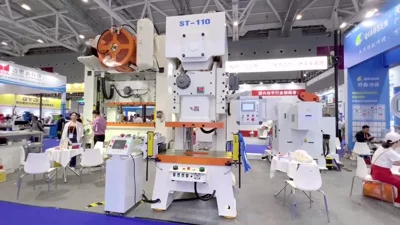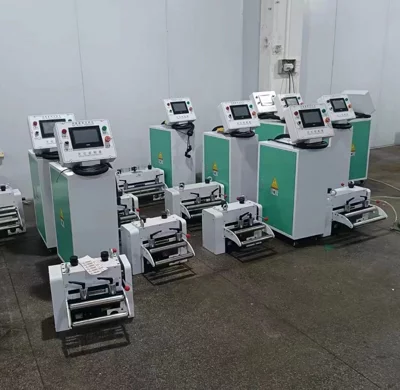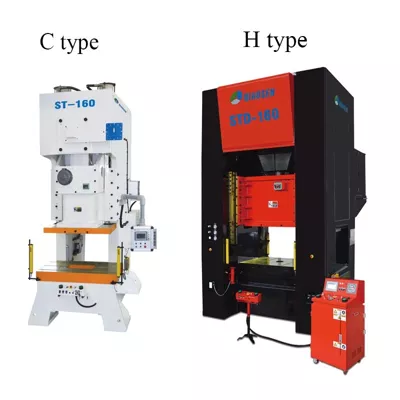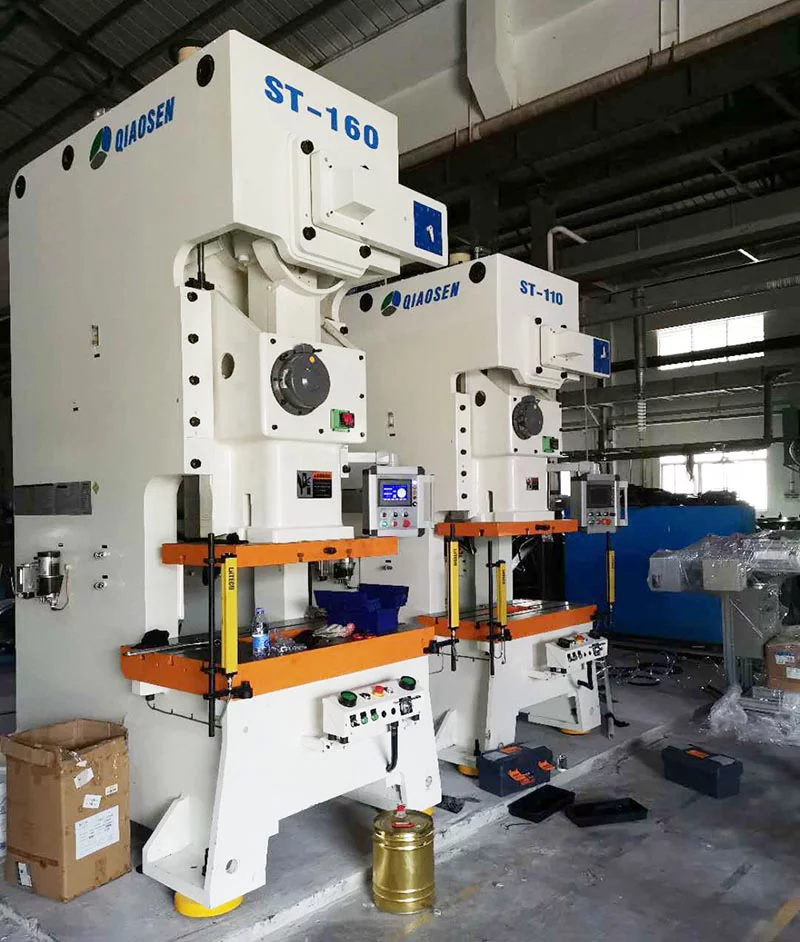 The working principle of a crank press involves multiple components working together to carry out operations. The motor drives the crankshaft through the pinion, flywheel, and clutch, providing the rotational motion necessary for the press to function. The slider, connected to the crankshaft via a connecting rod, moves back and forth along the guide rail on the press body, enabling the pressing action. The upper die is fixed to the slider, while the lower die is fixed to the workbench, allowing the press to apply pressure to the material between them, forming it into the desired shape. The clutch, controlled by a foot pedal, determines the movement or stoppage of the crank-slider mechanism, enabling the press to be operated or halted as needed. The brake system works in conjunction with the clutch to bring the press to a stop at a specific position, preventing further motion once the clutch is disengaged. The flywheel not only transmits power but also acts as a flywheel to evenly distribute the motor's load, ensuring smooth and stable operation of the press.
The working principle of a crank press involves multiple components working together to carry out operations. The motor drives the crankshaft through the pinion, flywheel, and clutch, providing the rotational motion necessary for the press to function. The slider, connected to the crankshaft via a connecting rod, moves back and forth along the guide rail on the press body, enabling the pressing action. The upper die is fixed to the slider, while the lower die is fixed to the workbench, allowing the press to apply pressure to the material between them, forming it into the desired shape. The clutch, controlled by a foot pedal, determines the movement or stoppage of the crank-slider mechanism, enabling the press to be operated or halted as needed. The brake system works in conjunction with the clutch to bring the press to a stop at a specific position, preventing further motion once the clutch is disengaged. The flywheel not only transmits power but also acts as a flywheel to evenly distribute the motor's load, ensuring smooth and stable operation of the press.
Firstly, the motor drives the crankshaft to rotate by transmitting power through the pinion, flywheel, and clutch. This rotational motion is essential for the functioning of the press.
Secondly, the slider, which is connected to the crankshaft through a connecting rod, reciprocates along the guide rail of the press body. This movement allows for the pressing action to be carried out.
The upper die of the press is fixed onto the slider, while the lower die is fixed onto the workbench of the punch. This configuration allows the press to apply pressure to the stamping material placed between the upper and lower dies. Through this pressure, the material is molded and transformed into the desired shape, becoming a workpiece through press processing.
The clutch in the crank press is controlled by a foot pedal which activates the control mechanism. This mechanism determines the movement or stoppage of the crank-slider mechanism. By engaging or disengaging the clutch, the press can be operated or brought to a halt, depending on the requirements of the production process.
Additionally, the brake system in the press works in conjunction with the clutch. After the clutch is disengaged, the crank-slider mechanism can come to a stop at a specific position. This position is typically when the slider reaches the top dead center. The brake ensures that the press remains stationary and does not continue the reciprocating motion once the clutch is disengaged.
Lastly, the flywheel in the crank press serves a dual purpose. It not only acts as a large gear to transmit power but also functions as a flywheel to evenly distribute the motor's load. This balanced distribution of load allows for efficient energy storage and release, ensuring smooth and stable operation of the press.
8years foriegn trade experience Easily grasp customer needs Keeping good relationship with customers





